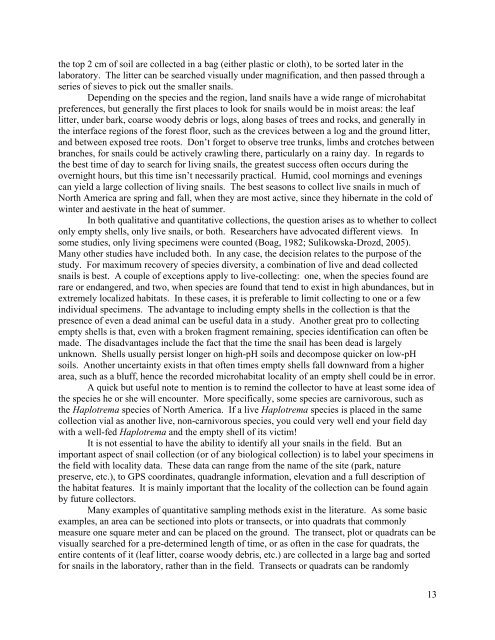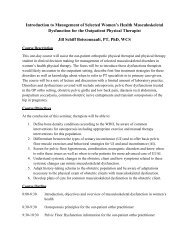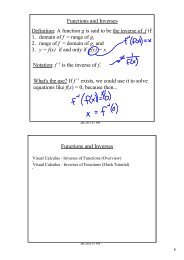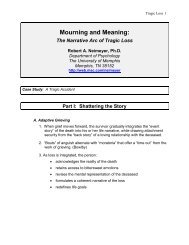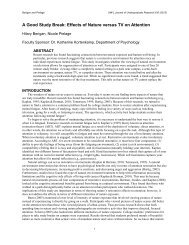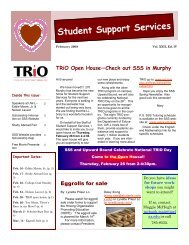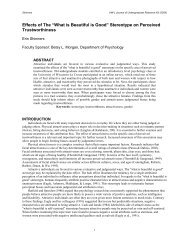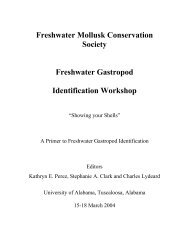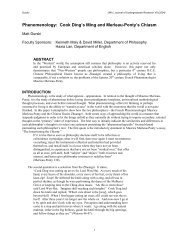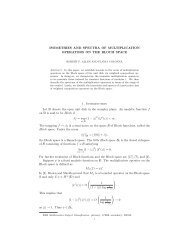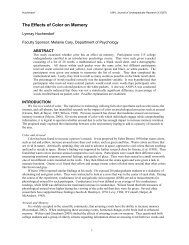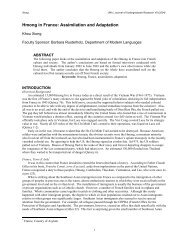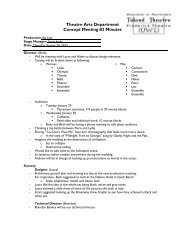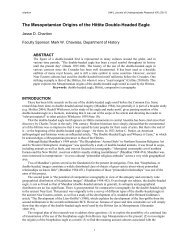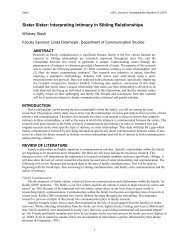A Guide for Terrestrial Gastropod Identification - University of ...
A Guide for Terrestrial Gastropod Identification - University of ...
A Guide for Terrestrial Gastropod Identification - University of ...
Create successful ePaper yourself
Turn your PDF publications into a flip-book with our unique Google optimized e-Paper software.
the top 2 cm <strong>of</strong> soil are collected in a bag (either plastic or cloth), to be sorted later in the<br />
laboratory. The litter can be searched visually under magnification, and then passed through a<br />
series <strong>of</strong> sieves to pick out the smaller snails.<br />
Depending on the species and the region, land snails have a wide range <strong>of</strong> microhabitat<br />
preferences, but generally the first places to look <strong>for</strong> snails would be in moist areas: the leaf<br />
litter, under bark, coarse woody debris or logs, along bases <strong>of</strong> trees and rocks, and generally in<br />
the interface regions <strong>of</strong> the <strong>for</strong>est floor, such as the crevices between a log and the ground litter,<br />
and between exposed tree roots. Don’t <strong>for</strong>get to observe tree trunks, limbs and crotches between<br />
branches, <strong>for</strong> snails could be actively crawling there, particularly on a rainy day. In regards to<br />
the best time <strong>of</strong> day to search <strong>for</strong> living snails, the greatest success <strong>of</strong>ten occurs during the<br />
overnight hours, but this time isn’t necessarily practical. Humid, cool mornings and evenings<br />
can yield a large collection <strong>of</strong> living snails. The best seasons to collect live snails in much <strong>of</strong><br />
North America are spring and fall, when they are most active, since they hibernate in the cold <strong>of</strong><br />
winter and aestivate in the heat <strong>of</strong> summer.<br />
In both qualitative and quantitative collections, the question arises as to whether to collect<br />
only empty shells, only live snails, or both. Researchers have advocated different views. In<br />
some studies, only living specimens were counted (Boag, 1982; Sulikowska-Drozd, 2005).<br />
Many other studies have included both. In any case, the decision relates to the purpose <strong>of</strong> the<br />
study. For maximum recovery <strong>of</strong> species diversity, a combination <strong>of</strong> live and dead collected<br />
snails is best. A couple <strong>of</strong> exceptions apply to live-collecting: one, when the species found are<br />
rare or endangered, and two, when species are found that tend to exist in high abundances, but in<br />
extremely localized habitats. In these cases, it is preferable to limit collecting to one or a few<br />
individual specimens. The advantage to including empty shells in the collection is that the<br />
presence <strong>of</strong> even a dead animal can be useful data in a study. Another great pro to collecting<br />
empty shells is that, even with a broken fragment remaining, species identification can <strong>of</strong>ten be<br />
made. The disadvantages include the fact that the time the snail has been dead is largely<br />
unknown. Shells usually persist longer on high-pH soils and decompose quicker on low-pH<br />
soils. Another uncertainty exists in that <strong>of</strong>ten times empty shells fall downward from a higher<br />
area, such as a bluff, hence the recorded microhabitat locality <strong>of</strong> an empty shell could be in error.<br />
A quick but useful note to mention is to remind the collector to have at least some idea <strong>of</strong><br />
the species he or she will encounter. More specifically, some species are carnivorous, such as<br />
the Haplotrema species <strong>of</strong> North America. If a live Haplotrema species is placed in the same<br />
collection vial as another live, non-carnivorous species, you could very well end your field day<br />
with a well-fed Haplotrema and the empty shell <strong>of</strong> its victim!<br />
It is not essential to have the ability to identify all your snails in the field. But an<br />
important aspect <strong>of</strong> snail collection (or <strong>of</strong> any biological collection) is to label your specimens in<br />
the field with locality data. These data can range from the name <strong>of</strong> the site (park, nature<br />
preserve, etc.), to GPS coordinates, quadrangle in<strong>for</strong>mation, elevation and a full description <strong>of</strong><br />
the habitat features. It is mainly important that the locality <strong>of</strong> the collection can be found again<br />
by future collectors.<br />
Many examples <strong>of</strong> quantitative sampling methods exist in the literature. As some basic<br />
examples, an area can be sectioned into plots or transects, or into quadrats that commonly<br />
measure one square meter and can be placed on the ground. The transect, plot or quadrats can be<br />
visually searched <strong>for</strong> a pre-determined length <strong>of</strong> time, or as <strong>of</strong>ten in the case <strong>for</strong> quadrats, the<br />
entire contents <strong>of</strong> it (leaf litter, coarse woody debris, etc.) are collected in a large bag and sorted<br />
<strong>for</strong> snails in the laboratory, rather than in the field. Transects or quadrats can be randomly<br />
13


